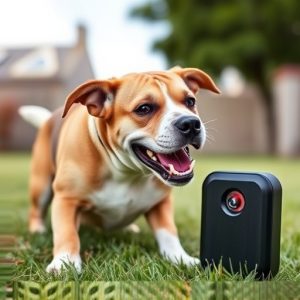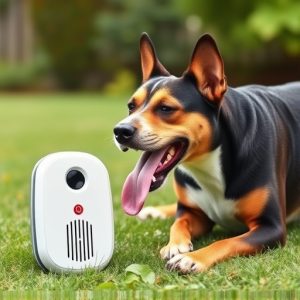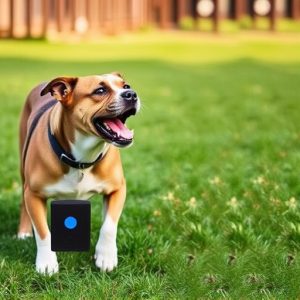Electronic Dog Repellents: Safety, Effectiveness, and Implementation Guide
Electronic dog repellents provide a safe, effective solution for managing canine behavior by emittin…….
Electronic dog repellents provide a safe, effective solution for managing canine behavior by emitting sounds or vibrations distressing to dogs but inaudible to humans. Certified under standards like FDA or UL, these devices ensure no harm to people or pets when used properly. Reputable manufacturers adhere to stringent safety regulations, guaranteeing product reliability and performance. For optimal results, follow safety standards, proper installation, regular maintenance, strategic placement, consideration of environmental factors, and local regulations, promoting peaceful coexistence between humans and animals.
“Discover the revolutionary power of Electronic Dog Repellents (EDRs) – non-lethal, sonic solutions for managing canine behavior. This article explores how EDRs emit high-frequency sound waves to deter dogs without harm, offering a humane alternative to traditional methods. We delve into the safety standards and certifications crucial for consumer protection, ensuring peace of mind. Learn best practices for implementing and maintaining your sonic repellent system effectively, harnessing its benefits to create harmonious coexistence between pets and people.”
- Understanding Electronic Dog Repellents: How They Work and Their Benefits
- Safety Standards and Certifications for Animal Control Devices
- Implementing and Maintaining Your Sonic Repellent System Effectively
Understanding Electronic Dog Repellents: How They Work and Their Benefits
Electronic dog repellents have emerged as a humane and effective solution for managing canine behavior in various settings, from residential areas to agricultural lands. These devices operate on a simple yet powerful principle: emitting sounds or vibrations that animals find unpleasant, without causing them harm. The key to their success lies in the technology’s ability to target specific frequencies that dogs perceive as threatening, while being inaudible to humans.
One of the significant advantages of electronic dog repellents is their safety. These devices are designed with stringent Electronic Dog Repellent Safety Standards Certification, ensuring they pose no risk to people or pets when used correctly. This makes them an attractive alternative to traditional methods that often rely on chemicals or traps, which can be harmful and controversial. By offering a non-lethal approach, electronic repellents promote peaceful coexistence between humans and animals, making them a responsible choice for anyone seeking to control dog behavior.
Safety Standards and Certifications for Animal Control Devices
When it comes to animal control, especially for electronic dog repellents, safety is paramount. These devices, designed to deter unwanted animals from specific areas, must adhere to stringent regulations and obtain relevant certifications to ensure they are safe for both humans and animals. Reputable manufacturers prioritize compliance with international standards, such as those set by the FDA or equivalent bodies, to guarantee product safety.
Certifications like UL (Underwriters Laboratories) or CE (Conformité Européenne) signify that an electronic dog repellent has undergone rigorous testing for safety, effectiveness, and quality. These certifications are crucial in confirming that the device operates within safe sound pressure levels, avoiding potential harm to hearing while still being effective as a deterrent. Moreover, they assure users that the product is reliable and will perform as intended without posing any risks to humans or pets.
Implementing and Maintaining Your Sonic Repellent System Effectively
Implementing and maintaining an effective animal control sonic repellent system requires careful consideration of several factors. First, ensure your chosen device complies with relevant Electronic Dog Repellent Safety Standards Certification to guarantee its safety and effectiveness. Proper installation is key; follow the manufacturer’s instructions precisely to avoid any potential harm to both humans and animals. Regular maintenance includes checking battery life, cleaning sensors, and testing the system periodically to ensure it remains functional.
For optimal performance, position the devices strategically in areas where animal intrusion is common, such as near entry points or pathways. Consider environmental factors like temperature and humidity, which can affect device operation. Additionally, familiarize yourself with local regulations regarding sonic repellents to ensure compliance and foster a harmonious coexistence between humans and wildlife.
When implementing an animal control sonic repellent system, it’s essential to balance its effectiveness with safety. Understanding how these electronic dog repellents work and adhering to recognized safety standards, such as certifications from reputable organizations, ensures their humane and responsible use. By following best practices for implementation and maintenance, you can harness the benefits of this technology, including reduced human-animal conflict, while minimizing potential risks. This comprehensive approach promotes peaceful coexistence between humans and animals in shared spaces.


